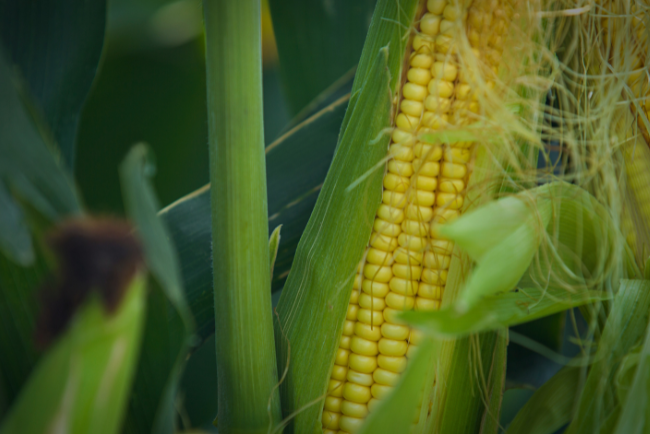
Maize is a resource-intensive crop. Fertilizers and other inputs are costly. A data-driven crop nutrition program, based on targeted soil and leaf sampling, prevents the over-application of nutrients when they aren’t needed, reducing costs and environmental impact. Understanding the maize growth stages allows for the efficient application of these inputs.
Understanding and optimizing maize crop nutrition is paramount for several compelling reasons:
Efficient nutrient management means you’re using your fertilizer resources wisely. You’re not overapplying or under applying fertilizers, which can lead to waste and increased costs. Smart nutrition practices conserve your resources, making your farming operation more cost-effective.
Maximizing crop yield is a primary goal for any farmer. Adequate nutrition is a fundamental factor in achieving high yields. Maize is a nutrient-demanding crop, and ensuring it receives the right nutrients in the correct amounts at critical growth stages is essential for optimizing yield.
Efficient nutrient management and fertilization lead to cost savings. By applying the right nutrients at the right time, farmers not only reduce input waste but also improve yield. This increases profitability allowing farmers to grow more with less.
A well-nourished maize crop growing in healthy balanced soil is more resilient to environmental stressors, such as drought, disease, and pests. Adequate crop nutrition equips the soil and the plant to withstand challenging conditions, potentially leading to more stable yields, even in adverse circumstances.
Understanding the growth stages of maize is like having a roadmap for proper crop nutrition. It ensures you provide the right nutrients in the right quantities at the right times, which not only boosts yield but also does so sustainably and efficiently. When creating a comprehensive crop nutrition program for maize, it’s essential to consider the following crucial growth stages of the crop:

Before planting maize, conduct a complete soil test to assess the nutrient levels in the soil, from which we can recommend the best-suited products and application rates for your soil and crop combination. Adjust pH levels with lime if needed to maintain an optimal range for maize growth. Once you have determined the right inputs to purchase, check the quality with fertilizer and lime analysis.
During this early growth phase, maize requires sufficient nutrients, especially nitrogen (N) and phosphorus (P), to establish strong root systems and healthy seedlings. Adequate soil preparation and balanced, well-placed fertilization based on pre-planting soil test, is critical at this stage.
Maize goes through rapid vegetative growth during this stage. Nutrient uptake is high, particularly nitrogen, phosphorus, potassium (K), and micronutrients like zinc (Zn) and manganese (Mn). A Deep Nitrogen Soil Test to 50 cm informs how much available nitrogen (nitrate + ammonium) is present in the root zone so that we can calculate the correct rate of nitrogen fertilizer to apply. This simple nitrogen soil test can result in significant fertilizer savings.
This is a critical stage for maize, and adequate nutrient availability, especially nitrogen and boron (B), is crucial for successful pollination and grain formation. Leaf tissue foliar analysis at this stage helps fine-tune the crop nutrition program for maximum pollination and grain setting.
Nutrient demand remains high during grain filling. Nitrogen, phosphorus, potassium, and magnesium (Mg) are essential for proper grain development and yield.
Once the crop is harvested, we carry out protein and grain nutrient analysis to determine the exact nutrient off-take of the crop, and to know which nutrients have been limiting; this tells us how effective our nutrition program has been, in order to fine-tune next season’s fertilizer program. We can also measure aflatoxin levels in maize grains to ascertain quality.
By conducting the right soil and leaf tissue tests at the right time, we can support you to implement a balanced, cost-effective crop nutrition program for maximizing your maize crop’s potential and profit.
In our pursuit of a successful maize crop, precise soil and leaf sampling are vital steps. We provide this sampling service for commercial farmers, and here’s a brief on the procedures:
One soil sample should consist of approximately 20 soil cores taken from the designated area. The cores should be collected in a zigzag pattern as shown below:
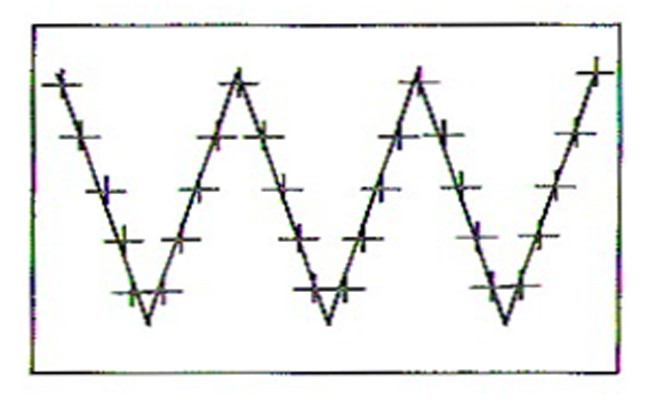
1️⃣ Place the soil cores in a bucket and mix them thoroughly.
2️⃣ Carefully label the Cropnuts sample bag with your company name, farm name, field name, sample depth, date, and the crop to be grown. Fill the soil bag halfway (500g) with this mixed, representative sample.
3️⃣ You can use various tools like a soil sampling tube, soil auger, or spade to collect soil samples. Avoid using galvanized, soft steel, or brass equipment if you plan to analyze trace metals. Ensure all tools are clean between samplings.
4️⃣ Do not take samples from areas such as lime piles, fertilizer spills, ant hills, gate areas, livestock congregation areas, poorly drained areas, dead furrows, fertilizer bands, old fence rows, or any other unusual areas.
5️⃣ Before taking the samples, clear away surface litter and crop residues. Sample the entire core from the actual soil surface to a depth of 25 cm.
When collecting leaf samples, it’s important to consider the following guidelines:
1️⃣ In uniform fields where maize grows uniformly, create a composite sample by collecting plant samples from at least 10 scattered areas within the field.
2️⃣ In problematic fields with varying growth or appearance, take two plant samples each from inside the problematic area and the normal area.
3️⃣ Ensure that each sample area has a separate Plant Analysis History completed.
4️⃣ Collect at least a rounded double handful (softball-sized) of leaf or plant tissue for analysis. Larger samples are preferred.
5️⃣ Use a clean paper bag or plastic bucket for collection and remove dust or residue from leaf surfaces with a soft brush. Do not wash the sample.
6️⃣ Place leaf samples in perforated Cropnuts bags for proper air circulation to prevent moisture buildup.
Remember, the quality of any analysis is directly linked to how well the sample is collected. By following these procedures diligently, you can ensure that your soil samples accurately represent your fields and provide valuable insights for your maize crop nutrition program.
Upon receiving the submitted soil and leaf samples, our team of analysts and experts will conduct a comprehensive analysis to provide you with a detailed report of your samples. The analysis report is your window into your soil’s health and your crop’s nutrient status. Here’s a glimpse of what you can expect.
Our soil analysis assesses vital soil parameters like nutrient levels (both macro and micronutrients), pH balance, salt concentrations, organic matter %, and more. Our analysis provides a clear snapshot of your soil’s fertility and health, which is crucial for optimizing your crop’s growth and yield.
The report, accompanied by easy-to-read charts and graphs, not only identifies your soil’s current condition but also offers precise recommendations for nutrient management. This valuable information empowers you to fine-tune your fertilization and lime application.
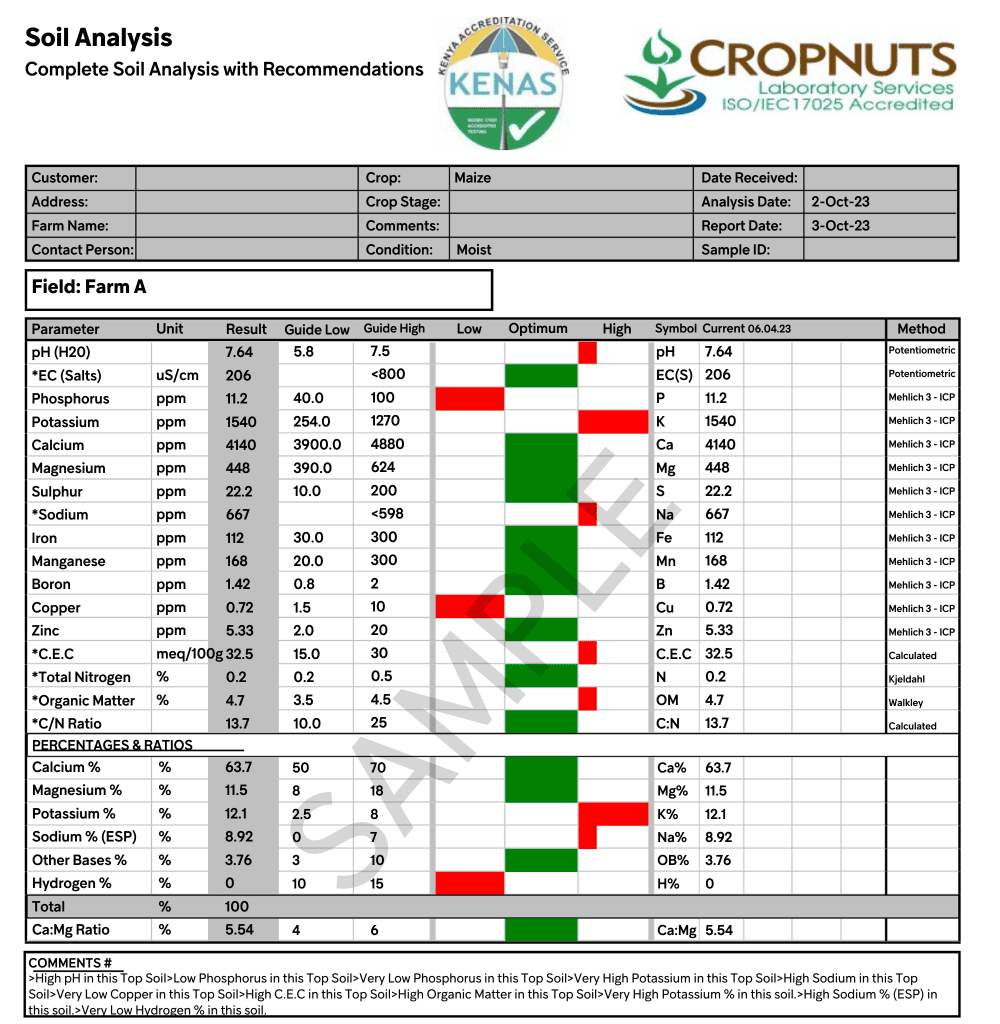
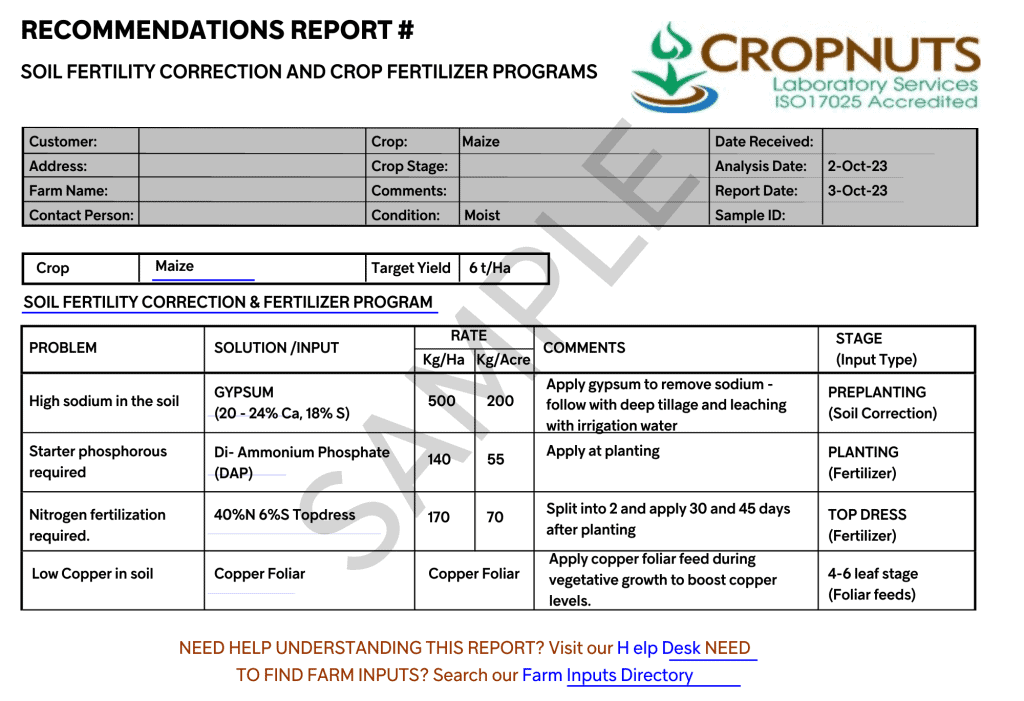
The leaf or plant samples are analyzed to determine plant nutrient concentrations and overall plant health. This report reflects your crop’s nutrient utilization, helping you understand whether your plants are effectively absorbing nutrients from the soil.
Like the soil report, the leaf analysis report comes with a clear and concise breakdown of nutrient levels and guidance for corrective actions, if needed. Together, these reports form the foundation of your crop nutrition strategy, enabling you to make informed decisions for a bountiful harvest.
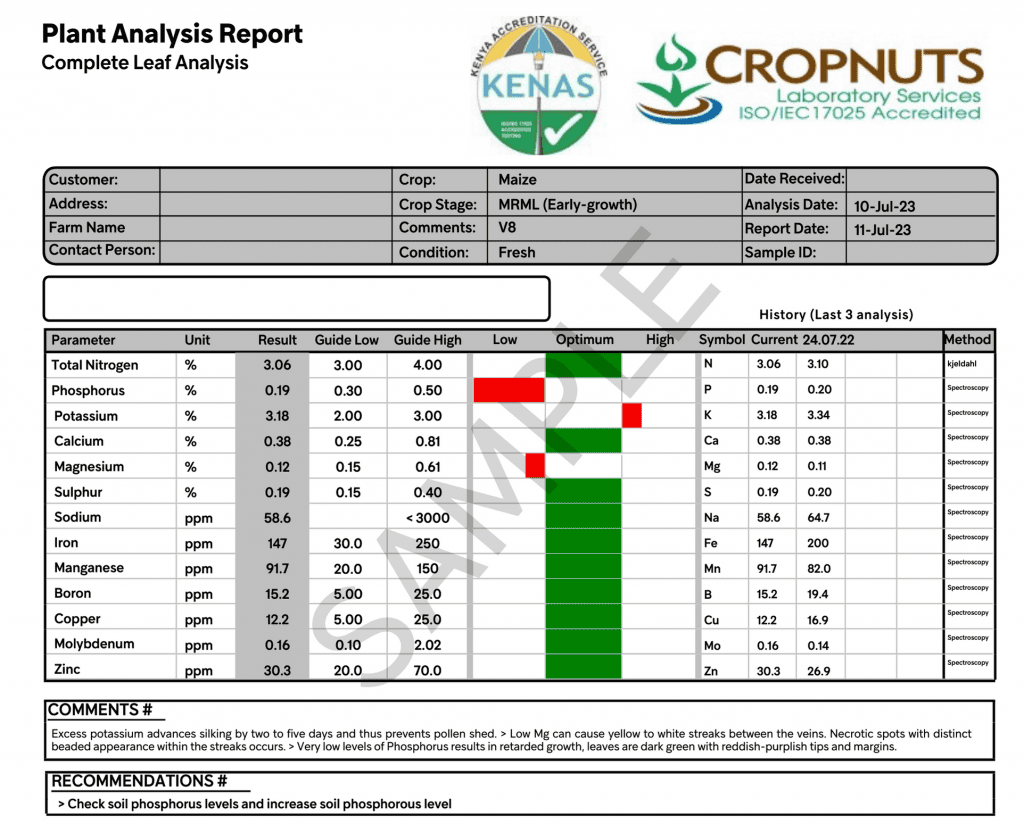
By understanding and addressing the nutritional needs of maize at each growth stage, farmers can optimize yields, reduce input costs, and attain better profitability for their farming operations.
We’re here to support you in your maize cultivation journey. If you have questions, need advice, or need assistance with soil or leaf sampling or how to send the samples to the laboratory, please don’t hesitate to contact us. Our office contacts are as follows:
Kenya, Limuru. Tel: +254 711 094 444 Email: support@cropnuts.com
Nigeria, Ibadan. Tel: +234 803 978 4205 Email: agriserve_ng@cropnuts.com
Zambia, Lusaka. Tel: +260 97 742 2250 Email: support_zm@cropnuts.com
Kindest regards,
Jeremy Cordingley
Founder & CEO
Crop Nutrition Laboratory Services Ltd (Cropnuts)
Kenya | Zambia | Nigeria
Order our services and get to know how to improve your soil for better yeilds.